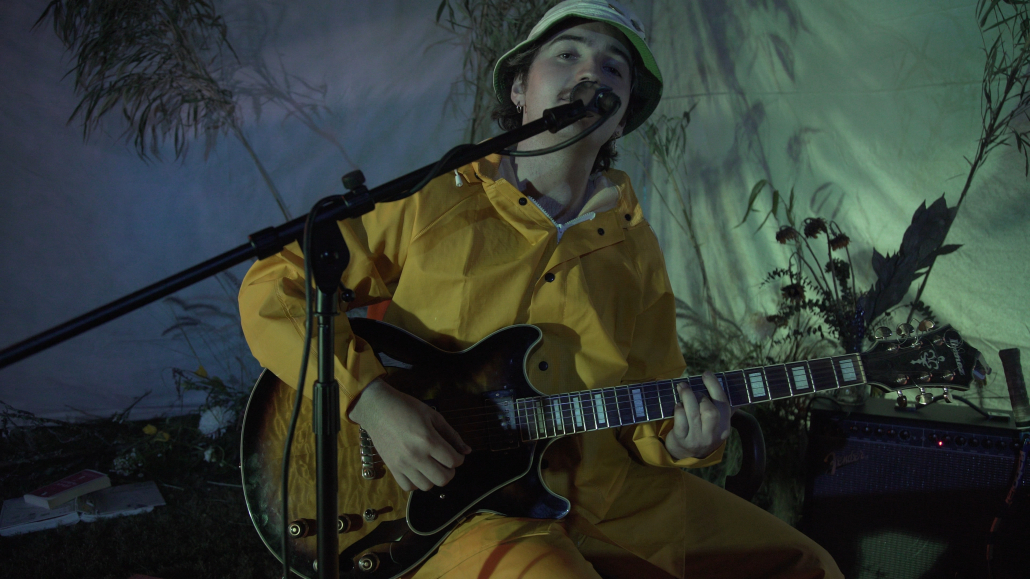111 Live celebrates the one year anniversary of the Happy Hour Fund

111 Live wasn’t an in-person concert, but regardless the production value, power of raw performances and attention to detail made the online event feel private and powerful.
The benefit on Sunday night was to commemorate the one year anniversary of the Happy Hour Fund, a mutual aid organization working out of Washington D.C. and Los Angeles to help financially assist excluded workers, such as sex workers, incarcerated people, workers with disabilities or other people disproportinately affected by the pandemic. All proceeds from the event were donated to the fund.
During the event, Happy Hour Fund Cofounder Ayu explained that they help workers by “using the money we would be using to go out to dinner, to happy hour, to go out and actually donating that money to the people who are keeping our lives going every day.”
According to River, another cofounder, the Happy Hour Fund has raised more than $30,000 to help these workers, and has worked with many other organizations to help people who are struggling due to the pandemic.
The livestream started with a car, friends picking each other up just to drive around and listen to music. It felt like the viewer themselves was experiencing the beginning of a fun night, full of potential. The hosts, DJs Kute and Kozy mixed music from the backseat, “providing the vibes” while Keilani Snyder, who did art promo design for the event, and director and set designer Minh Han Vu danced in the front as they drove. The car was lit red as they made their way through an L.A. neighborhood, but the light changed throughout the night along with the music as the video feed cut between the hosts and the musicians.
The first performer at the benefit was singer-songwriter Hannah Abrahim, a junior majoring in popular music performance. She was sitting criss cross on a bed outdoors, surrounded by plants and candles. It was dark, lit mainly by blue and purple colored lights, and it had the feeling of candlelight. Paige Thibault, a sophomore majoring in popular music performance, played piano and sang background vocals alongside her. Though the set was highly designed, her performance itself was simple, emotional and impactful as she debuted two of her original songs. She, along with all the performers of the night, sang to no audience, which gave her performance a feeling of intimacy missing from some large concerts.
Next was Kid Hastings, a junior majoring in music industry, dressed in a yellow jumpsuit and a bucket hat, who played an unreleased song called “Off Guard,” set to come out in the next week. He also played “Frame of Mind” and “Star.” He was in the same outdoor setting, but sitting in a chair, surrounded by plants and blue light with only a microphone, his guitar, a wine glass filled with roses and a stack of books.
Then, bathed in golden light, came Helena Holleran, a singer-songwriter from San Diego. Behind her was a moving light display reminiscent of a sunset, giving the entire set a feeling of coziness. As part of her set, she played an unreleased song called “Falling in the Sympathy of Youth.”
Jordyn Simone, lit in red and pink was the penultimate act. She sang on a stool while co-songwriter Liza Kaye played piano in the background. Fitting with the colors of her set, she sang an unreleased song called “Burn,” which is to be released soon. She described this song as “emotional, dramatic, cinematic.”
Last in the lineup was Kyle Lux, a junior majoring in popular music performance. His set was dimly lit green, as moving shadows danced on the wall behind him. He was accompanied by live cajon, violin and guitar at different points in his set. He sang his song “Rolling Stone,” which has nearly six million streams on Spotify.
The online concert came to a close as our hosts in the car pulled into a parking lot overlooking Downtown and got out of the vehicle as the credits rolled, while one last opportunity to donate to the Happy Hour Fund came across the screen.
The creativity and time spent on this event shone through.
Instead of trying to replicate what a live concert might feel like, with loud noise from the crowd and tons of instruments, the creators of this event created something totally new and engaging. The way each performer sang directly to the camera, with minimal instrumentals and editing, along with the thoughtful set design and lighting provided emotion and soul to each person’s performance, led to an intimate, lovely experience. The event raised $659 for excluded workers by the end of the night.

